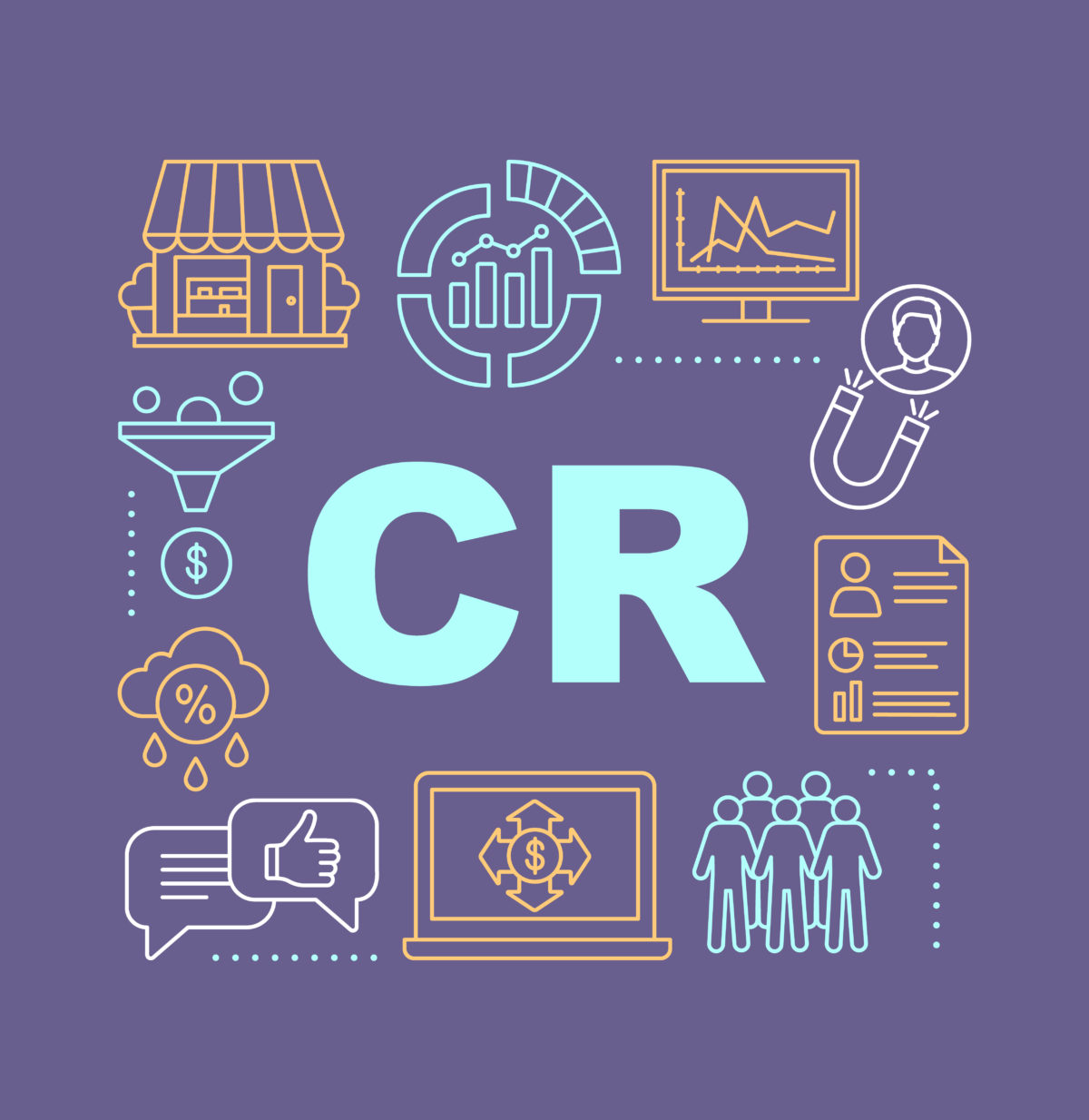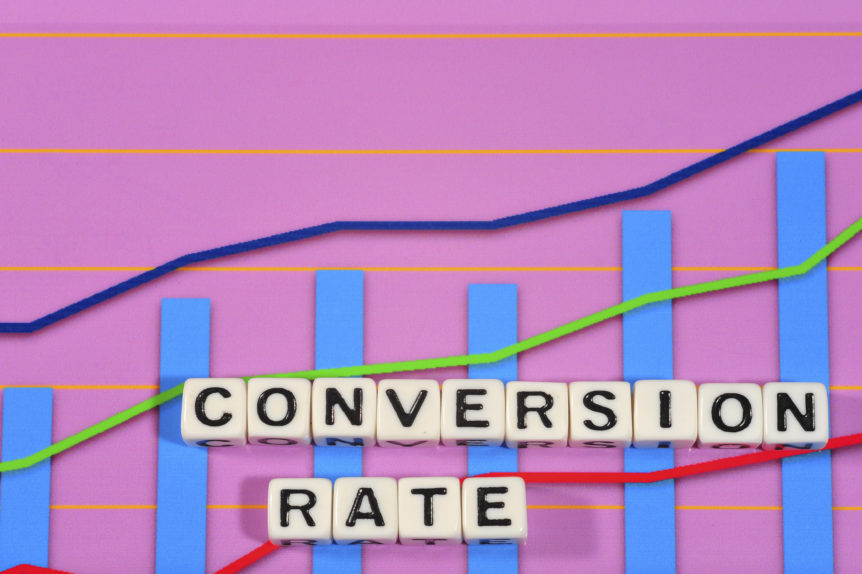For any small business utilizing online marketing of any kind, there aren’t too many metrics that you want to be more aware of than the CR (conversion rate). Otherwise, if you are just continually creating and publishing content without running analysis on it, then you are doing it blindly and won’t know what’s working, what’s not working, and which content you need to change according to its performance with your audience.
If you are well-aware of the CR, on the other hand, but can’t figure out how to improve that number, that’s obviously a problem, too. Businesses have been trying to come up with ways to persuade web searchers to buy from the business they’re promoting through the emails they send out for a really long time.
The difference now is that there are online metrics like conversion rate that can help you immensely in getting a solid grip on what people want to see in the marketing emails you send to them. From the time someone opens the email, to the click that brings them to your site where they finally buy something, those people are behaving in a certain way through every step, and they behave in that way for very specific reasons.
The tough part is knowing why they decide to buy from you or not buy from you. There are all kinds of factors that can affect your CR, but understanding what it really means is step #1. This is what we’re going to look at in this post, as well as actions you can take to build content that converts directly to new sales.

The Indispensable Conversion Rate Metric
Your CR is one of the most helpful metrics to tell you how effective you are in a variety of areas. The first thing CR tells you is obviously how many people are deciding to buy your product, but it goes beyond that, as well.
It’s indispensable because you not only get to see how many people are moving directly from a piece of content to your website and making a purchase, but you can see which types of content or channels you’re using that are converting more than others, giving you an idea of what you should be concentrating on more.
CR doesn’t just tell you what you’re doing right, but it shows you clearly where people’s attention is. Previously in this series, we talked about CTR (click-through rate), which can also give you very useful information about the behavior of your web visitors, but CR is then the next phase of metrics that gives you more concrete figures about your content’s performance.
See how many people move from looking at the content you post in various channels, to actually giving you their money, and you’ve got a pretty important number.

Use CR to Make It Easier On Yourself
If you’re a business owner who is handling every aspect of your business, from marketing to accounting and everything in between, then you may not have much of an idea about how these online metrics work or what they mean.
That is of course totally understandable because it certainly takes some time to learn about things like CR and how it contributes to the success of your email marketing campaign. Marketers for businesses look at the CR for all kinds of online marketing channels, including blog content and social media, but it is just as important for having greater success with email marketing.
The open rate of people interacting with your emails is the first metric you’ll probably consider because it shows how well you are lining up with the interests of the recipients, but then, you’ll naturally want to know if, after they open a marketing email, it was persuasive and targeted enough to compel someone to buy.
Which Conversion Rates Do You Need to Look At?
If you don’t want to get too deep into analytics, which is understandable since it’s really easy to drown in a sea of numbers, charts, and lists, then you can simply look at all of the CRs for all your media channels. To get a more intimate understanding of it, however, then you can examine specific conversion rates for different channels.
What this means is that you would only look at the ones relevant to each content channel that you’re using, and then cross-reference those figures with other metrics such as CTR, bounce rate, time on page, and backlinks. Those are just a few of the popular, significant ones.
You can see that delving into analytics comprehensively can get you into the tall grass pretty quickly; however, once you get better at understanding what you’re looking at, venturing more deeply into analytics can be very beneficial to you.
It’s Not as Complicated as It Seems
As you develop a well-organized content marketing campaign, it actually becomes much easier to quickly analyze the metrics you’re using, to the point where you can even look at those metrics at-a-glance and understand where you’re at with content.
Remember that your CR is more about the content you’re publishing than it is about sales, and that creates a priority list of: Content 1st, and Sales 2nd. Obviously, revenue is ultimately king, but a smart business owner knows that the way you acquire that revenue is even more important because if you don’t know how you made the money, then you’re not all that likely to be able to reproduce what you did in the first place.
It can be a real challenge to stay on top of everything as a small business owner (especially with a brand-new business), which means that knowing what you need to change about your online promotional content and marketing emails to make them perform more efficiently is highly valuable information.

Focus on What’s Most Important
CR provides for you a solid barometer of how your emails are performing, but if you just take that number at face value and just trust that, if that number is high, you don’t need to do anything further, is only one part of the picture.
So, what you want to look at is the CR that results from the content into which you are putting the most effort. For example, if you’re focusing the most on articles which you’re posting for your business blog but less on your social media marketing, then you want to pay more attention to the CR from your blog articles.
If that’s the case for you, then you’re not even trying that hard to work with social media for your business, so the CR for social media posts isn’t going to be a good indicator of the results of your efforts with social.
You can always start looking at the metrics for other channels as you concentrate your efforts on them more, but it’s a good practice to pay more attention to the CR of the content into which you’re putting the most work.

The First Step to Using Your CR
So, how do you utilize the CR metric and truly make it work for you? First, take it at face value—how many people went from a click on your content to a purchase. That’s the obvious approach to analysis, and it is definitely valuable.
When you’ve already got a lot of people going from your site’s landing page, a blog article, or an email, directly to making a purchase, then you’re clearly doing something right. A CR of 2-3% is pretty good, a 5% CR is excellent, and when you get up to and beyond the 10% range, then you’re doing great!
Not many marketers get above the 10% CR. It seems like a small percentage, but you have to remember that getting someone to see your online content and then buy something from you directly from that piece of content is a pretty difficult feat. That’s why email marketing, or content marketing of any kind takes time to perfect.
It is absolutely well worth the time and energy to get your email marketing campaign right, though. It’s a form of marketing that, once you get good at it, takes little effort and basically runs itself with little maintenance.
The Visitor Path
Second, you want to look at where those conversions came from, the content source from which they clicked and decided to buy. Essentially, what you do here is to trace the full visitor path, from first contact to conversion.
The full trace of the visitor path of the customer is going to give you the full picture and tell you what you did right, and what really works. What was the original entry point for a converted web visitor? Did the visitor open a marketing email from your company, then move to your website?
Did they click around on your site for a while before making a purchase, or did they go straight to buying from you as soon as they reached your site? The visitor path gives you a very useful, big picture that helps you to gain insight about your visitors’ behavior online as they navigate through your content.
How Can You Improve Your CR?
Actually, one of the best ways to increase your CR is to review your CTR and take time to analyze how people got from the click, to the purchase (involved with the full visitor path, as we already mentioned).
Find out what people decide to click on from the choices you give them in the content you create, and it will give you a better picture of what your customers are looking for, which gives you the insight you need to develop better content that converts.
If a ton of people are clicking on a particular type of content that you are publishing but don’t finally convert, then there’s something you’re missing there, in the content. At that point, you can then explore the popular type of content that isn’t converting and look into the analytics for that content to try and figure out how you need to improve it, or just experiment with it.
The content you have that is already converting well is a problem that is solved, but the content that people like but don’t follow through to make a purchase is the portion that you want to take some time to further develop. As for the content that already has a high CR, you can take that type of content and try to reproduce it in the same style through other channels, too.

Look at the Full Picture
CR is probably the most-used and well-known online metric that business owners look at to gauge how well they are designing content and email marketing campaigns. This is for good reason because it does, in fact, tell you that what you’re doing is working, but to improve your CR of your emails when it isn’t quite up to snuff, it takes a little more analysis.
You don’t have to become a professional analyst and spend half your day looking at metrics and charts, but you do have to look at a few metrics, so that you get the full picture and not just one piece such as the CR.
Take a bit more time to look at the CTR, too, as well as the bounce rate (how many people click on your content but then click away before buying), the time visitors spend on the page of your site, and maybe something like the number of shares you get from social media posts. You’ll quickly see that just having a little more information about your content’s performance, like email marketing, will make the CR a lot more meaningful to you.
Check out all of the articles in the ‘Email Marketing’ series:

Stephanie
Stephanie is the Marketing Director at Talkroute and has been featured in Forbes, Inc, and Entrepreneur as a leading authority on business and telecommunications.
Stephanie is also the chief editor and contributing author for the Talkroute blog helping more than 200k entrepreneurs to start, run, and grow their businesses.




